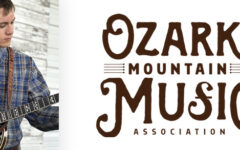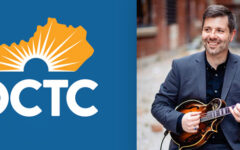This post is a contribution from Alan Munde, banjo legend, teacher, performer, and writer. Be sure to check out Alan’s band The Alan Munde Gazette.
 I have been teaching banjo in the Creative Arts Department (when I began it was known as the Country and Bluegrass Program) of South Plains College in Levelland, TX since 1986. Before that I was a touring bluegrass musician with Country Gazette, and before that a Sunny Mountain Boy with Jimmy Martin. During my time as a touring musician I tried my hand at giving lessons to supplement my income. Guided by my own experiences as a learner (a degree in Education from the University of Oklahoma was also helpful) and aided by the few instructional books available at the time, I created the best instructional method I could. I continued that method at South Plains College, expanding it with more teaching ideas from other banjo teachers and colleagues here.
I have been teaching banjo in the Creative Arts Department (when I began it was known as the Country and Bluegrass Program) of South Plains College in Levelland, TX since 1986. Before that I was a touring bluegrass musician with Country Gazette, and before that a Sunny Mountain Boy with Jimmy Martin. During my time as a touring musician I tried my hand at giving lessons to supplement my income. Guided by my own experiences as a learner (a degree in Education from the University of Oklahoma was also helpful) and aided by the few instructional books available at the time, I created the best instructional method I could. I continued that method at South Plains College, expanding it with more teaching ideas from other banjo teachers and colleagues here.
For these many years I have tried my best to explain things I have found to be relevant in learning to play the banjo, things a good player needs to know how to do. But I continued to struggle with one issue that I still had trouble explaining. Students ask me, “Why can”t I just play what I feel? Why should I have to copy or learn the music of another player?” Many esteemed players, including Tony Trischka and Peter Wernick in their very fine book, Masters of the 5-String Banjo, added to my dilemma by giving contradictory advice that runs something like this: play it like Earl, don”t copy anybody, learn everything Scruggs did, develop your own style.
I finally realized that Trischka and others are addressing two different audiences. The first audience is of banjo students. As a student, we should strive to learn as much as we can about how the creators and masters of the instrumental style played so that we, too, might be able to play successfully in the style. What better model do we need than Earl Scruggs? Of course, there are others to learn from also – Stanley, Reno, Osborne, Shelton etc. – to get the full scope of the bluegrass banjo world. The second audience is banjo players as musical artists. Here one should strive to develop a personal style “? take the things we have learned as a student and add our own views of the art and become our own musical person.
As to the student audience I suggest copying solos of the classic players. An example from my constant, but slow reading history may be helpful here. Among the many interesting books I have read is Wanderlust: A History of Walking, by Rebecca Solnit. In the book she covers such topics as theories of bipedalism, gardens and labyrinths, literary walkers such as Wordsworth and Thoreau and several other topics. The one that caught my attention was the chapter “The Uphill Road to Grace: Some Pilgrimages.” In this chapter she describes several kinds of pilgrimages. One is the walking pilgrimage that can be taken along the path that Christ was thought to have walked as he carried the cross. The Pilgrim can set his feet in the same places that Christ set his:
“Pilgrimage is premised on the idea that the sacred is not entirely immaterial, but that there is a geography of spiritual power.”
She suggests that there are things to be learned by such a journey:
“Pilgrimages make it possible to move physically, through the exertions of one”s body, step by step, toward those intangible spiritual goals that are otherwise so hard to grasp.”
One can come to an understandings and insights that cannot be put into words and can only be learned through the act of walking the walk.
In the same way, players can walk the walk of great banjo artists who have gone before them by copying their styles. I have been asked if I get tired of playing Foggy Mountain Breakdown. My response is “no.” For me it is a pilgrimage. As a student of the bluegrass banjo I am trying to the best of my ability and understanding to move my fingers in the same way as Earl Scruggs, to put my fingers in the same place (“the geography of spiritual power”) in the same order that he did “? to walk the walk. In doing so, I believe that I gain a sense of what he was up to, so to speak, and in turn bring that internal knowledge to bear on the whole of my playing as an artist of the bluegrass banjo. I do the same thing with Allen Shelton”s I Wonder Where You Are Tonight and Take My Ring From Your Finger, and Doug Dillard”s The Old Home Place and The Whole World Round, as well as hundreds of other solos from these and other great players.
I believe it has been a great advantage for my playing to copy the greats the best I can and then strive to play the way I feel, so that I will be the best Alan Munde banjo player I can be.







